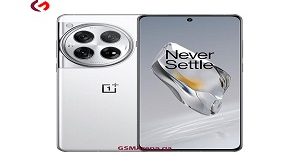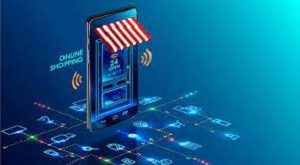Introduction:
In the computerized age, where the limits among physical and virtual domains are progressively obscured, the requirement for vigorous and secure validation techniques has never been seriously squeezing. Biometric Confirmation arises as a spearheading arrangement, utilizing the remarkable physiological and social qualities of people to strengthen our computerized personalities. This article investigates the mind boggling scene of Biometric Validation, following its advancement, diving into the innovations that power it, looking at its applications across ventures, and considering the fate of secure personality confirmation.
I. Advancement of Biometric Verification:
The foundations of biometrics for of distinguishing proof can be followed back to antiquated human advancements, where people were perceived by actual attributes or engravings. Be that as it may, the contemporary time has seen a progressive change in the field, energized by headways in innovation and a developing requirement for secure, helpful, and proficient verification techniques.
Verifiable Points of reference:
The earliest occasions of biometric validation can be tracked down in old Babylon, where fingerprints were squeezed into dirt tablets for deals. Likewise, old Chinese developments utilized thumbprints on dirt seals as a type of personality confirmation.
Presentation of Computerized Biometrics:
The change to mechanized biometrics started in the late nineteenth hundred years with the arrangement of fingerprints by Sir Francis Galton. This noticeable the commencement of deliberate biometric distinguishing proof, establishing the groundwork for future progressions.
Computerized Period Developments:
The coming of the computerized period saw a flood in biometric innovative work. Innovations, for example, unique mark acknowledgment, facial acknowledgment, iris checking, and voice acknowledgment acquired conspicuousness as dependable techniques for character confirmation.
II. Center Innovations Empowering Biometric Validation:
Biometric Confirmation depends on state of the art innovations that catch and examine interesting natural or social attributes. The exactness and security of these frameworks are reinforced by modern calculations and equipment parts.
Unique finger impression Acknowledgment:
Unique mark acknowledgment is one of the most settled biometric advances. It includes the catch of the novel edge designs and particulars focuses on an’s at the tip of singular’s finger. Optical, capacitive, and ultrasonic sensors are generally used to gain unique mark information, which is then handled and put away safely for verification.
Facial Acknowledgment:
Facial acknowledgment investigates extraordinary elements of a singular’s face, like the distance between eyes, nose, and mouth. Headways in PC vision, profound learning, and brain networks have altogether worked on the precision of facial acknowledgment frameworks, making them broadly embraced for confirmation purposes.
Iris Checking:
Iris examining includes catching the special examples in the hued piece of the eye, known as the iris. This innovation utilizes close infrared light to make a definite iris picture. Iris acknowledgment is known for its high exactness and is in many cases utilized in secure conditions where accuracy is principal.
Voice Acknowledgment:
Voice acknowledgment dissects the particular qualities of a singular’s voice, including pitch, tone, and discourse designs. High level AI calculations process voice information to make a remarkable voiceprint, giving a solid method for confirmation.
Conduct Biometrics:
Conduct biometrics evaluate remarkable examples in a singular’s way of behaving, like composing beat, mouse developments, or step. These qualities are hard to impersonate, adding an additional layer of safety to confirmation frameworks.
III. Applications Across Enterprises:
Biometric Validation has pervaded different enterprises, offering secure and helpful character check techniques. From monetary administrations to medical services and policing, applications are different and consistently extending.
Monetary Administrations:
In the monetary area, biometric confirmation is generally utilized for secure admittance to banking applications, ATMs, and online exchanges. Unique mark and facial acknowledgment innovations give a consistent and secure way for people to confirm their personalities.
Healthcare:
Biometrics in medical care are utilized for patient ID, secure admittance to clinical records, and guaranteeing the realness of remedies. Biometric validation improves patient information security and lessens the gamble of fraud in medical care settings.
Policing Security:
Policing use biometrics for criminal distinguishing proof through unique finger impression data sets and facial acknowledgment frameworks. Biometric validation adds to public wellbeing by supporting the ID of people in a protected and effective way.
Cell phones and Cell phones:
The joining of biometric confirmation into cell phones has become universal. Finger impression sensors, facial acknowledgment, and iris checking innovations give clients a solid and helpful method for opening their gadgets, approve installments, and safeguard individual data.
Taxpayer supported organizations:
States influence biometrics for resident recognizable proof, line control, and secure admittance to taxpayer driven organizations. Biometric confirmation improves the respectability of personality records and adds to public safety.
IV. Security and Moral Contemplations:
While biometric verification offers improved security, it additionally raises significant moral and protection contemplations that should be painstakingly addressed to guarantee capable and straightforward execution.
Protection Concerns:
Biometric information is exceptionally private, and its abuse can prompt serious security infringement. Executing rigid information assurance measures, secure capacity conventions, and clear client assent instruments are vital for address protection concerns.
Information Security:
The security of biometric information bases is vital. Hearty encryption, secure capacity, and multifaceted validation are pivotal parts of protecting biometric information from unapproved access or breaks.
Moral Utilization of Biometrics:
The moral utilization of biometrics includes straightforwardness, responsibility, and adherence to moral standards. Laying out clear rules for the assortment, stockpiling, and utilization of biometric information is fundamental to guarantee mindful and moral practices.
Exactness and Inclination:
Biometric frameworks should show high exactness and alleviate predisposition to guarantee fair and impartial treatment. Addressing predispositions in calculations and routinely refreshing frameworks to further develop precision add to mindful and fair-minded biometric confirmation.
V. Advancements and Future Patterns:
The scene of biometric confirmation is dynamic, with continuous developments and arising patterns molding its direction toward a safer and easy to understand future.
Nonstop Confirmation:
The development of persistent validation includes constant observing of client conduct and biometric qualities all through a meeting. This versatile methodology upgrades security by ceaselessly confirming the client’s personality, especially in high-risk situations.
Biometric Combination:
Biometric combination includes joining various biometric modalities for upgraded security. This could incorporate the synchronous utilization of unique finger impression and facial acknowledgment or joining social biometrics with physiological qualities to make a more strong validation framework.
Biometric Wearables:
Wearable gadgets, for example, smartwatches and wellness trackers, are consolidating biometric verification highlights. These gadgets can utilize measurements like pulse fluctuation or novel development designs for secure client verification.
Post-Quantum Biometrics:
With the approach of quantum figuring, there is a developing spotlight on creating post-quantum biometric validation strategies that stay secure notwithstanding quantum dangers. This includes investigating cryptographic procedures and calculations versatile to quantum assaults.
Normalization and Interoperability:
Normalization endeavors are in progress to lay out normal conventions and interoperability principles for biometric confirmation. This would work with consistent joining across stages and upgrade the client experience.
VI. Conclusion:
Biometric Confirmation remains as a foundation in the journey for secure, helpful, and solid character check strategies. From its modest starting points attached in antiquated civic establishments to the modern frameworks of today, biometrics proceeds to develop and reclassify the manner in which we demonstrate our character in the computerized domain.
As we explore this period of mechanical development, it is urgent to work out some kind of harmony between security, comfort, and moral contemplations. Tending to protection concerns, guaranteeing information security, and advancing moral use are fundamental parts of capable biometric verification rehearses.
The excursion into the future of biometric verification holds invigorating possibilities, with constant progressions, arising innovations, and a pledge to establishing secure computerized conditions. In this present reality where character is progressively digitized, biometric confirmation arises as a confided in watchman, protecting tomorrow with the uniqueness of every person.


